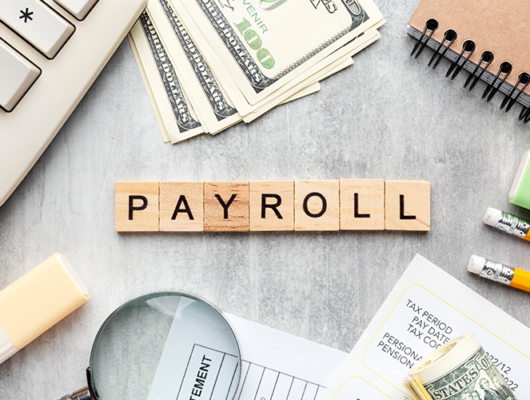Ever noticed how Netflix automatically charges your account each month? That’s the latest trend in the payments space and is gaining a lot of popularity even with B2C eCommerce stores. It’s called automated recurring payments which are capable of authorizing a configured amount for a given tenure.
Recurring payments come with a lot of advantages over manual payments. Everyone from subscription-based businesses to retailers (such as Amazon’s Subscribe and Save) are employing this payment model to boost their revenue.
Payor provides you with smart payment products for setting up your own recurring revenue model but before, let’s understand how it works.
How Do Recurring Payments Work?
Recurring payments are like a monthly subscription that charges a fee to your customers based on the parameters set up by you. The charge can be levied monthly, quarterly, bi-annually, or annually. The customers can renew their subscription, cancel it or change their plan.
The payment processor (or the payment gateway) usually gains authorization from the customer’s bank account to charge the fee without manual approval. Therefore, the customer is not required to do any sort of action for paying the subscription fees.
To enable recurring payments, you require two basic elements;
- Payment plan – the amount of fee, when to charge, how to renew, etc.
- Payment processor – the underlying technology which will handle the processing for the given tenure of the payouts.
Challenges in Setting Up Recurring Payments
Recurring payments may sound simple but come with a host of challenges. Charging fees on a recurring basis is not difficult and you’ll find this functionality in almost all payment gateway providers. But the real challenges arise when you have to integrate the payment processing with your business flow.
To explain this consider that you offer a 14-day free trial of your service and you want to start charging payments only when the trial is over. You’d also want that the customer’s account is automatically suspended once the trial is over. These functionalities depend upon the payment provider and need to be configured manually.
Therefore, finding a solution that seamlessly integrates with your billing engine is important. Some of the common hurdles in this method are;
- Additional products
- Service discounts
- Changing subscription plan
- Revising failed payments
Payor’s automated billing system helps businesses set up recurring payments with extended business logic support.
Benefits of Introducing Recurring Payments
Recurring payments can help your business in a number of ways. This includes the following benefits;
- Customers gravitate to flexible payment options such as a monthly subscription model in comparison to paying upfront for the whole year. This increases retention and customer loyalty.
- Payment automation reduces the need for slow manual processes that increase payment friction. You don’t have to set up any request forms, no validations, and no repetitive payment reminders.
- Recurring payments can better deal with missed payments or declined cards. As the system is completed automated, your customers wouldn’t be as prone to payment issues.
- Recurring payments increase revenue collection as customers are motivated to stay longer with the business. Once the subscription begins, the customer enjoys a comfortable monthly price.
- Recurring payments are highly configurable. You don’t have to settle for a static plan for your customers. You can offer billing based on several parameters such as number of items bought, amount of quota used, number of accounts registered, etc.
Things to Note While Setting Up Recurring Payments
- Pick your payment gateway wisely.
- Does the payment gateway offer customization?
- Does it let you accept international payments?
- How does the chargeback mechanism work?
- Study your own billing and payment management platform.
- Does your billing backend comply with your payment provider?
- Is it secure enough to handle the credit card details of your customers?
- Have you tested it for recurring payments?
- Offer a self-service portal to your customers for payment customization.
- The provider must allow customers to change payment details such as payment method and subscription plan.
- The billing update mechanism should be automated at the customer’s end.
- There should be a support section or helpline for customer’s billing assistance.
- Billing notifications should be clear and comprehensible.
- Each time a payment is made, your customers should get a complete billing summary.
- Reminders for upcoming payments, confirmations for successful payments, etc, should be established.
- Customers should be able to access their account history from a centralized portal.
Best Options for Setting Up a Recurring Payments System
So, if you’re sold on the idea, the following are a few payment processors worth considering for setting up recurring payments for your business.
- Payor – Payor provides an end-to-end solution for managing all your recurring payments. It’s an integrated solution that works as your payment gateway as well as a recurring payment processor. You don’t need to install a 3rd party system for managing the bills. A dedicated accounts team helps you in setting up specific billing for all your customers and business types.
- Stax – Stax is a SaaS payments platform for configuring customized payment solutions. The solution offers multi-currency support and great customer service.
- Quickbooks – Originally an accounting management software, Quickbooks has started offering payment processing also. It offers integrated accounting and multi-currency support.
Conclusion
Setting up recurring payments could be an important addition to your revenue model You can constantly collect payments with minimal manual management and create a steady flow of revenue for your business. The ease of use and customizability allow businesses to offer a unique payment experience to their B2C or B2B customers.








